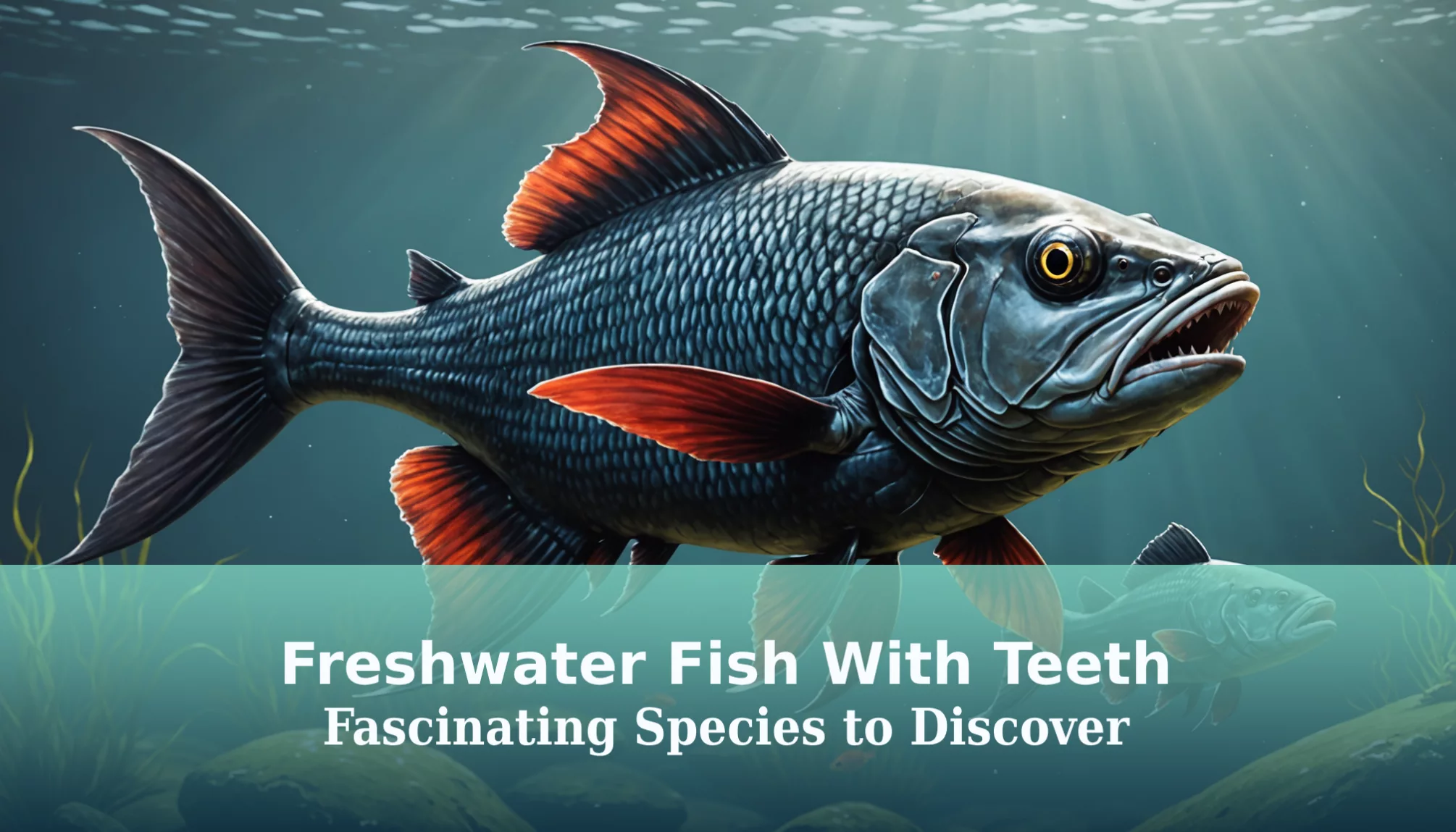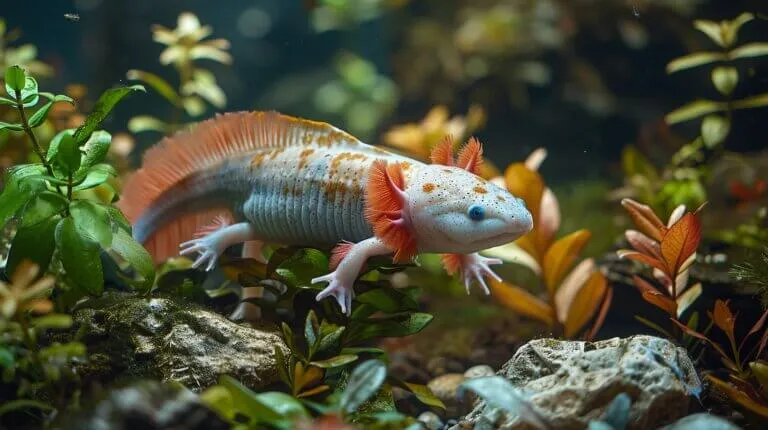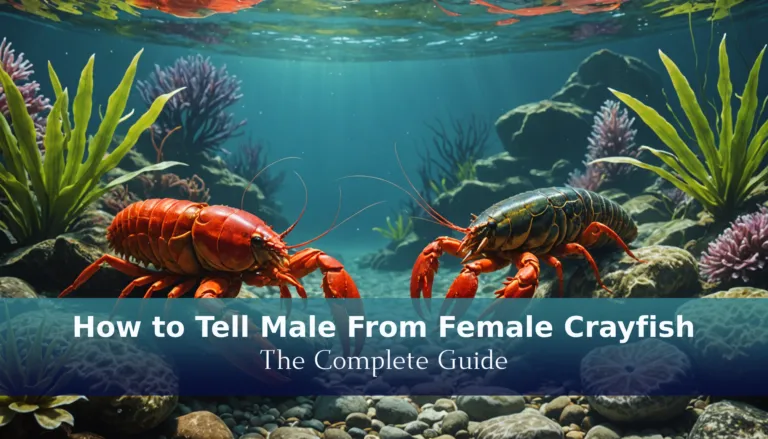Have you ever wondered what it’s like to have razor-sharp teeth? The world of Freshwater Fish With Teeth is full of surprises, showcasing species that aren’t just colorful but also fierce hunters! Understanding these toothy creatures is super important if you’re an aquarium enthusiast or an aspiring angler. Knowing how their unique jaws work can help you appreciate their role in ecosystems and make your fishing adventures more successful.
In this article, we’ll dive into the fascinating traits of these fish, highlight popular species like the piranha and alligator gar, and bust some myths that surround them. You’ll discover why these fish are such effective predators and learn tips on catching them. If you miss out on this knowledge, you might find yourself unprepared on your next fishing trip! Get ready to explore the incredible world of freshwater fish with teeth—let’s get started!
Understanding Freshwater Fish With Teeth
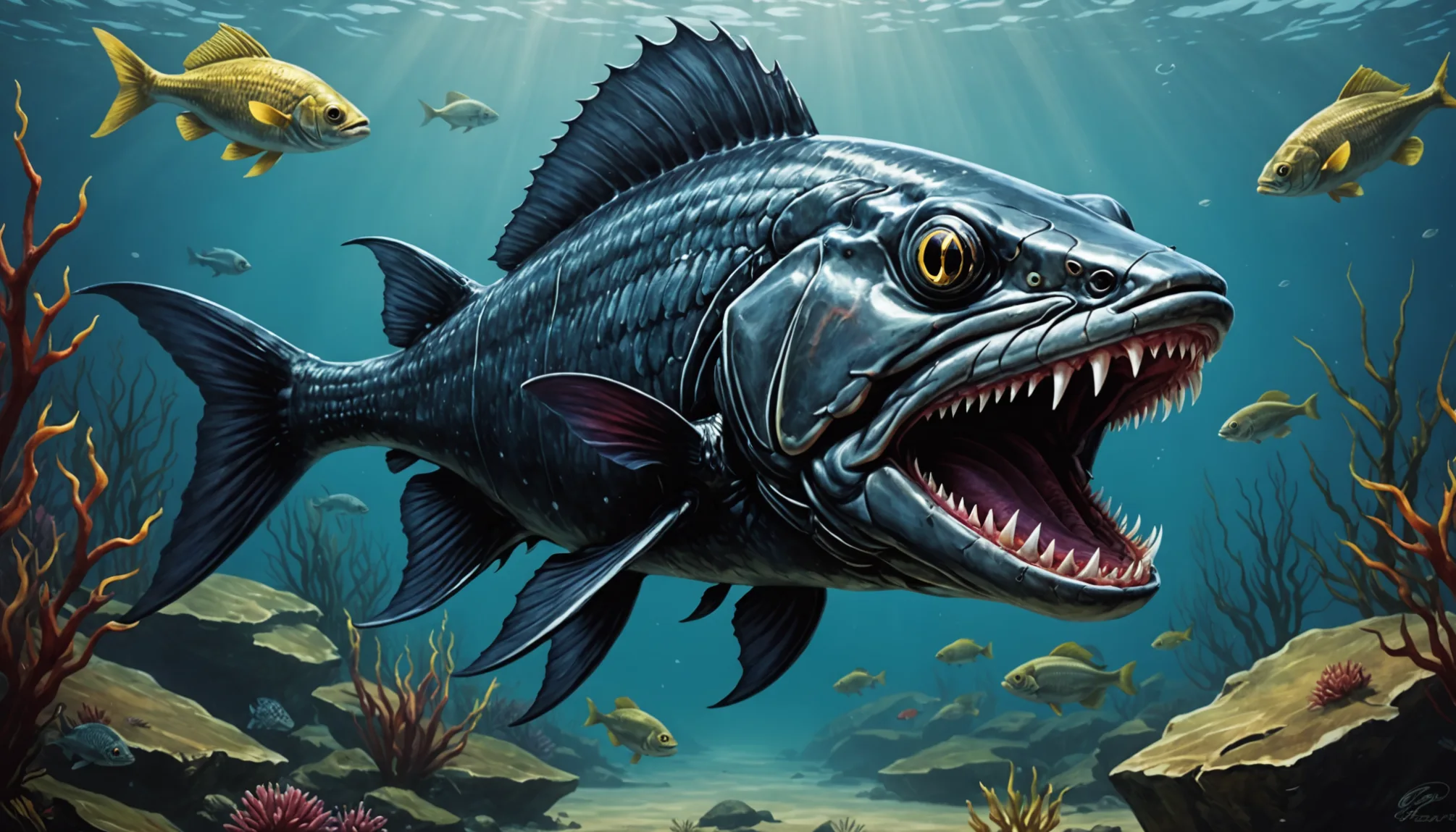
What Makes a Fish a “Fish with Teeth”?
A “fish with teeth” refers to species that have unique dental structures. These teeth can differ greatly in shape and size based on their diets and lifestyles. For example, herbivorous fish have flat teeth that grind and crush plant material. In contrast, carnivorous fish possess sharp, pointed teeth ideal for slicing through flesh. Notable examples include piranhas and alligator gars. Piranhas have razor-sharp teeth that tear apart their prey, while alligator gars feature peg-like teeth designed to grasp slippery fish. This variety in dental design is vital for their feeding habits and survival.
The Role of Teeth in Freshwater Fish
Teeth serve many important functions for freshwater fish, primarily in feeding and defense.
- Feeding Mechanism: In many species, teeth are essential for how they consume food. For instance, piranhas use their strong teeth to efficiently rip chunks of flesh from their prey, making them effective predators. Alligator gars, on the other hand, use their teeth to secure and hold onto their catch, preventing escape. This ability to grasp prey is key to their hunting strategy.
- Defense: Teeth also act as a defense against predators. The sight of sharp teeth can scare away potential threats. A fish that displays its teeth may appear more dangerous, which can discourage predators from attacking. This defense mechanism is crucial for species living in environments with many threats.
Common Myths About Freshwater Fish Teeth
Many misconceptions exist about freshwater fish with teeth, leading to misunderstandings about their behavior and safety.
- Myth: All freshwater fish with teeth are dangerous.
Fact: While some species, like piranhas, have sharp teeth that can cause harm, many fish have harmless dental structures. For example, the bluegill has small, rounded teeth that do not pose a threat to humans. - Myth: Teeth are only used for eating.
Fact: Fish teeth also play roles in social interactions, such as establishing territory or during mating displays. Some species use their teeth to assert dominance or attract mates, showing that teeth have social functions beyond feeding.
Sources:
- Wikipedia: Pacu
- Southern Living: Invasive Fish With Large Humanlike Teeth Pulled From Texas
- Science: 13 Different Species Of Fish With Terrifyingly Sharp Teeth
Popular Species of Freshwater Fish With Teeth
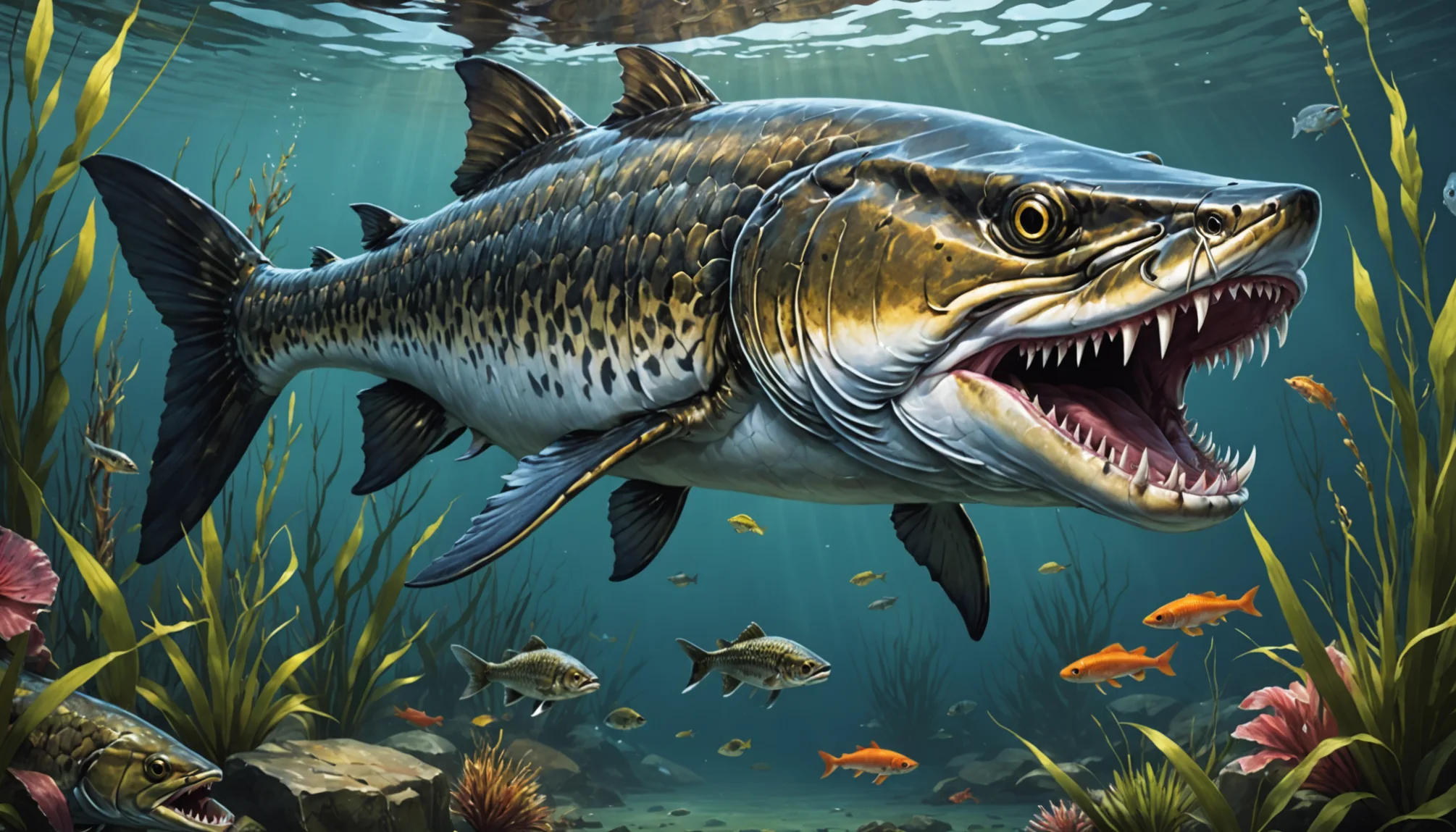
The Alligator Gar: A Unique Predator
The Alligator Gar (Atractosteus spatula) is a remarkable fish found mainly in the southern United States. This large predator can grow over 10 feet long, making it one of the most significant freshwater fish. Its long body is covered with thick, armored scales that protect it from threats. The sharp teeth of the Alligator Gar help it catch slippery fish and other aquatic animals. These teeth are designed for gripping and holding prey, not chewing.
One fascinating fact about the Alligator Gar is its prehistoric appearance. Many people say it resembles a living dinosaur! As a top predator, it plays an essential role in maintaining balance within fish populations in lakes and rivers. The Alligator Gar prefers quiet waters rich in vegetation, allowing it to ambush its prey. Many anglers seek this impressive fish for sport due to its size and strength.
The Piranha: Misunderstood Sportfish
Piranhas (Serrasalmus spp.) are often portrayed as fierce predators in movies and on television. However, they are not as dangerous to humans as many believe. Piranhas are primarily found in South American rivers and lakes, including the Amazon Basin. They typically grow to about 1 to 2 feet long and have sharp teeth, perfect for tearing flesh.
While Piranhas can eat meat, they also consume plants and smaller fish. They are social creatures and often travel in schools, providing protection from larger predators. When sensing danger, they can become aggressive, especially when defending their territory or young. Their sharp teeth are well-suited for ripping apart chunks of flesh, making them effective hunters in their natural habitats. Despite their fearsome reputation, Piranhas usually do not attack humans unless provoked.
Wolf Fish: Characteristics and Behavior
Wolf Fish (Anarhichas spp.) are yet another type of freshwater fish known for their powerful jaws and numerous sharp teeth. These fish primarily inhabit colder waters, such as the North Atlantic Ocean, but can also be found in some freshwater environments. They are recognized for their aggressive behavior and strong bite, which allows them to consume hard-shelled prey like sea urchins and shellfish.
Wolf Fish have a robust body and can grow up to 4 feet long. Their unique hunting method involves using powerful jaws to crush prey. The many sharp teeth in their mouths help them grip and devour food effectively. Wolf Fish are opportunistic feeders, meaning they will eat whatever is available, making them skilled hunters in their ecosystems.
Interesting Facts:
- The Alligator Gar is known for its sharp, conical teeth that assist in catching fish.
- Piranhas often school in large numbers to protect themselves from threats.
- Wolf Fish thrive in icy conditions but can adapt to various water temperatures.
These species of freshwater fish with teeth highlight the diversity and adaptability of aquatic life. Understanding their behaviors and characteristics can help dispel myths and foster a greater appreciation for these remarkable fish.
Lesser-Known Freshwater Fish With Teeth
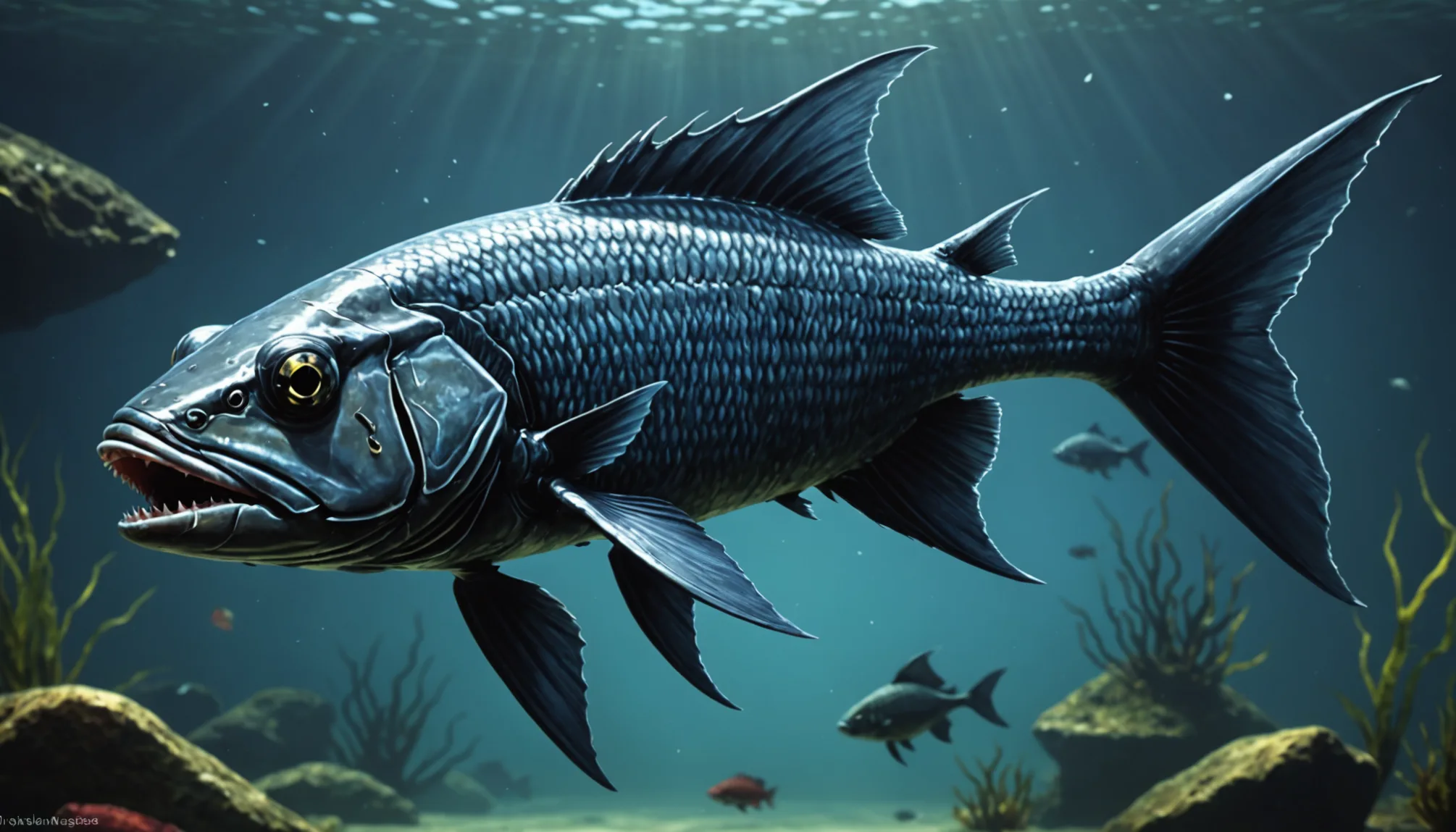
Examining the Dracula Fish’s Unique Jaw
The Dracula Fish, scientifically known as Dracula spp., thrives in the Amazon River basin. This fish stands out for its unique jaw and long, fang-like teeth. These needle-sharp teeth help the Dracula Fish grasp and hold onto its prey, which mainly consists of smaller fish. This adaptation allows it to hunt effectively in its natural habitat.
Many aquarists admire the Dracula Fish for its striking appearance and fascinating feeding habits. However, it requires special care due to its specific dietary needs and habitat preferences. Keeping this extraordinary fish demands attention to its environment and diet, presenting a rewarding challenge for enthusiasts.
Zooming In on the Payara: The “Vampire Fish”
The Payara, also known as the Vampire Fish, is a remarkable species found in the Orinoco and Amazon River basins. It is famous for its impressive fangs, which can grow up to 6 inches long. These large canine teeth give the Payara a fearsome look and allow it to capture fish effectively.
As an aggressive hunter, the Payara primarily targets other fish. Its hunting strategy often involves ambushing prey with powerful jaws. This fish is a favorite among sport fishermen due to its size and the thrill it presents when caught. Many anglers enjoy sharing stories of landing this ferocious fish in the jungles of South America.
Exploring the Bowfin and its Chomp Power
The Bowfin, scientifically named Amia calva, is an ancient species found in North America, especially in freshwater lakes and rivers. It features sharp, conical teeth that assist in capturing and consuming prey. The Bowfin is often labeled a “living fossil” because it shows traits typical of both bony fish and more primitive species.
Remarkably, this fish can survive in low-oxygen environments, making it a resilient predator across various aquatic habitats. Its strong jaws and aggressive nature help it thrive, making it a vital species in the ecosystems of lakes and rivers. Anglers frequently find the Bowfin an exciting catch due to its powerful fight and unique appearance.
Summary Table of Lesser-Known Freshwater Fish With Teeth
| Fish Species | Unique Feature | Habitat | Feeding Habits |
|---|---|---|---|
| Dracula Fish | Long, fang-like teeth | Amazon River basin | Grabs smaller fish |
| Payara | Fangs up to 6 inches long | Orinoco and Amazon basins | Aggressive fish hunter |
| Bowfin | Sharp, conical teeth | Freshwater lakes & rivers | Ambush predator |
The Role of Freshwater Fish With Teeth in Ecosystems
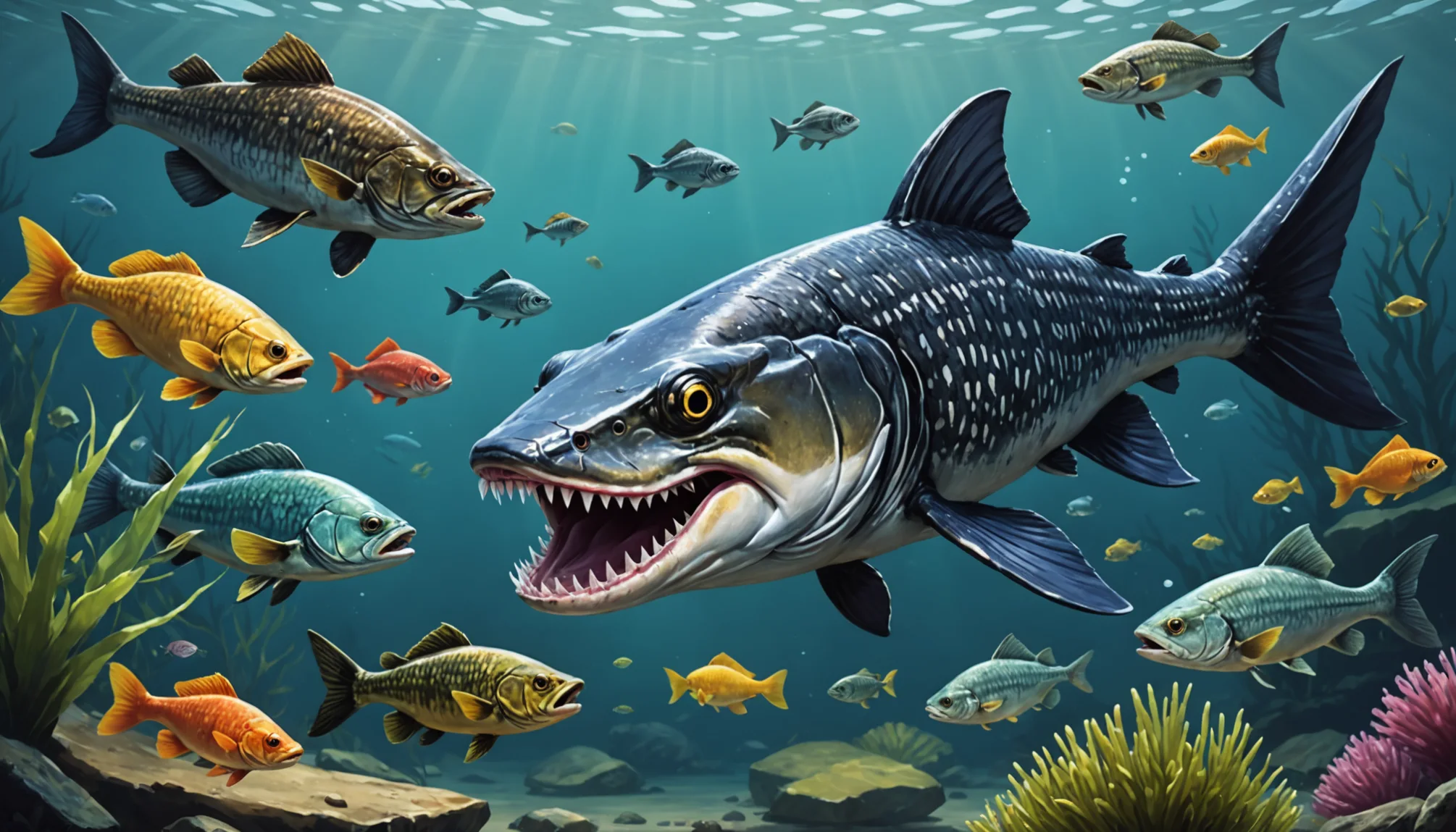
Freshwater fish with teeth are vital to their ecosystems. These fish help maintain food chains and balance aquatic habitats. Each species has unique behaviors and feeding patterns that affect their surroundings. Understanding these roles is crucial for managing fisheries and conserving aquatic life.
How Species Like Snakehead and Pike Affect Food Chains
Snakeheads are invasive fish found in many regions. They disrupt local food chains by preying on native fish and amphibians. This predation harms local biodiversity because they compete with native fish for food and space. Consequently, populations of native species may decline, reducing food options for other animals.
Northern Pike serve as apex predators in freshwater systems. They primarily eat smaller fish, which helps keep fish populations in check. By controlling the number of smaller fish, pike ensure that no single species dominates the ecosystem. Their presence is essential for maintaining healthy fish communities in lakes and rivers.
The Impact of Giant Trahira and Pickerels on Habitat
Giant Trahira, also called “trahira,” are aggressive predators. They play an important role by regulating fish populations in their habitats. By preying on smaller fish, they help maintain balance within the community structure. This predation promotes diversity among fish species, preventing any one species from becoming too abundant.
Pickerels, similar to pike, are also significant predators. They thrive in weedy areas and control the populations of smaller fish. This regulation helps maintain a balanced ecosystem. By managing herbivore populations, pickerels support the health of aquatic plants, which are essential for fish habitats and overall ecosystem health.
Understanding Muskies: The Apex Predator
Muskies, or muskellunge, are often regarded as the top predators in freshwater environments. Their presence typically indicates a healthy ecosystem. Muskies can grow large and consume various prey, including fish and even waterfowl. By controlling the populations of other fish, muskies help maintain a balanced food web.
Their predatory behavior promotes biodiversity in aquatic environments. When muskies thrive, other fish species can coexist without one overwhelming the others. Understanding the role of muskies in ecosystems is crucial for effective fishery management and conservation efforts.
Fishing Techniques for Targeting Fish With Teeth

Fishing for freshwater fish with teeth is an exciting adventure. These fish often show unique behaviors and need different techniques to catch them successfully. This section outlines various strategies to help anglers effectively target these toothy species.
Best Lures for Sportfishing Species
When fishing for species like piranhas and alligator gars, selecting the right lure is essential. The best lures mimic the natural prey of these fish, making them more likely to bite. Here are some effective options:
- Crankbaits: Great for enticing aggressive fish like the alligator gar, crankbaits imitate the movement of baitfish, making them irresistible.
- Spinnerbaits: The flash and vibration of spinnerbaits attract fish in murky waters. They work well for piranhas during feeding frenzies.
- Swimbaits: Resembling small fish, swimbaits effectively target various toothy species. They are especially useful near structures where predators hide.
- Topwater Lures: Using poppers or frogs can provoke strikes from predators lurking just below the surface. This technique is both fun and visually exciting.
Choosing lures that resemble the natural prey of freshwater fish with teeth can significantly increase the chances of a successful catch.
Recommended Techniques for Catching Black Piranha
Catching black piranha requires specific techniques due to their sharp teeth and aggressive tendencies. Here are some tips for anglers:
- Use Strong Lines and Tackle: Piranhas have powerful jaws and can bite through weak lines. Anglers should opt for heavy tackle to withstand their bites.
- Fish During the Right Times: Early mornings and late evenings are the best times to catch piranhas. They are more active during these hours, increasing the chances of a catch.
- Mimic Natural Movements: When using lures, replicating the movements of wounded prey is helpful. Slow, erratic motions can trigger their instinct to strike.
- Fish Near Cover: Piranhas often hide around submerged structures. Casting near rocks, fallen trees, or aquatic vegetation can lead to better catches.
Using these tailored techniques improves the chances of landing piranhas successfully.
Tips for Landing Lingcod and Other Toothy Fish
Landing lingcod and other species with sharp teeth requires special care. Here are some helpful tips to ensure safety:
- Use a Landing Net: A landing net provides a safe way to catch these fish without risking injury from their sharp teeth.
- Be Cautious When Handling: Always keep fingers clear of the fish’s mouth. Its powerful jaws can inflict serious damage.
- Prepare for a Fight: Fish like lingcod are known to thrash once hooked. Anglers should be ready to apply steady pressure and adjust techniques as needed.
- Use Barbless Hooks: Barbless hooks make releasing fish easier, minimizing harm to both the fish and the angler.
By following these tips, anglers can enjoy a safer and more successful fishing experience when targeting lingcod and other toothy fish.
Conclusion
Exploring freshwater fish with teeth is like diving into a world of fascinating creatures! We learned that these fish, such as the alligator gar and piranha, are important predators in their ecosystems. Their unique teeth help them catch prey and survive in their watery homes. Plus, we discovered some lesser-known species like the Dracula fish, which has a jaw unlike any other!
As you think about fishing for these toothy fish, remember the best techniques and lures to use. Whether you’re angling in lakes or rivers, there’s so much to discover! Keep your curiosity alive, and who knows what amazing species you’ll encounter next on your adventures with freshwater fish!
FAQs
1. What are the most common freshwater fish with teeth?
Several well-known freshwater fish have teeth. The piranha is famous for its sharp teeth and strong jaws, often seen as dangerous but actually plays a vital role in its ecosystem. The alligator gar features long, sharp teeth and is known as a formidable predator. Another remarkable species is the payara, or vampire fish, which has long fangs used to catch smaller fish. The dracula fish possesses a unique jaw structure with sharp teeth that aid in feeding, while the bowfin is recognized for its powerful bite and robust teeth. All these species contribute significantly to the balance of their aquatic environments.
2. Are there any risks when fishing for toothy fish?
Yes, fishing for toothy freshwater fish carries certain risks. Species like the piranha have aggressive behavior, increasing the chance of injury. Anglers should handle these fish with care and consider wearing protective gear like gloves. Bites and injuries can occur while unhooking the fish, making safe handling crucial for a positive fishing experience.
3. How do I care for aquarium fish with teeth?
Caring for freshwater fish with teeth in an aquarium requires specific attention. Here are key considerations:
- Tank Size: A larger tank is essential for ample swimming space and growth.
- Water Quality: Clean, filtered water is critical for their health.
- Diet: These fish need a varied diet that mimics their natural feeding habits, often including live or frozen foods.
- Compatibility: Choose tank mates wisely, as many toothy fish are predatory and require compatible companions.
By following these guidelines, aquarium enthusiasts can create a suitable environment for their toothy fish, ensuring their well-being and vitality.

